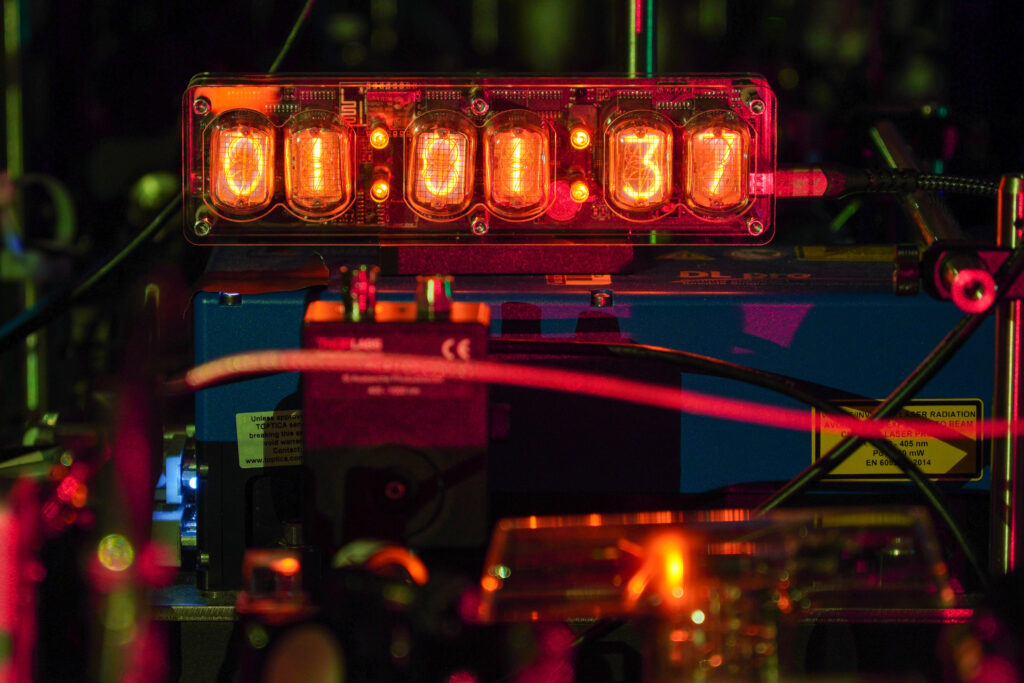
Every time you check the time on your phone, make an online transaction, or use a navigation app, you are depending on the precision of atomic clocks. These clocks keep time by relying on the “ticks” of atoms as they naturally oscillate at rock-steady frequencies. Today, atomic clocks operate by tracking cesium atoms, which tick over 10 billion times per second. Each of those ticks is precisely tracked using lasers that oscillate in sync, at microwave frequencies.
MIT physicists have now found a way to significantly improve the stability of optical atomic clocks, which rely on even faster-ticking atoms such as ytterbium. These atoms can be tracked with lasers at higher, optical frequencies, potentially tracking time intervals up to 100 trillion times per second. By reducing “quantum noise”—a fundamental measurement limitation due to quantum mechanics—the team has doubled the precision of these clocks.
Revolutionizing Time Measurement
The development of next-generation atomic clocks represents a significant leap forward in timekeeping technology. Optical atomic clocks, if kept stable, could discern finer intervals of time, a capability that could have far-reaching implications for various scientific fields. The MIT team discovered that an effect of a clock’s laser on the atoms, previously considered irrelevant, can be leveraged to further stabilize the laser.
The researchers developed a method to harness a laser-induced “global phase” in ytterbium atoms and have boosted this effect with a quantum-amplification technique. This new approach, detailed in a study published in the journal Nature, could enable portable optical atomic clocks that can be transported to various locations to measure a range of phenomena.
“With these clocks, people are trying to detect dark matter and dark energy, and test whether there really are just four fundamental forces, and even to see if these clocks can predict earthquakes,” says study author Vladan Vuletić, the Lester Wolfe Professor of Physics at MIT.
Quantum Entanglement and Time Reversal
In 2020, Vuletić and his colleagues demonstrated that an atomic clock could be made more precise by quantumly entangling the clock’s atoms. Quantum entanglement is a phenomenon by which particles can be made to behave in a collective, highly correlated manner. This technique redistributes noise or uncertainty in measuring the atoms’ oscillations, resulting in a clearer, more measurable “tick.”
Previously, the team was limited by the ticking instability of the clock’s laser. In 2022, they derived a way to amplify the difference in laser versus atom tick rates with “time reversal,” a method that relies on entangling and de-entangling the atoms to boost the signal acquired in between. However, this was still done using traditional microwaves, which oscillate at much lower frequencies than the optical standards ytterbium atoms can provide.
“When you have atoms that tick 100 trillion times per second, that’s 10,000 times faster than the frequency of microwaves,” Vuletić explains.
Harnessing the Global Phase
In their new study, the MIT team has applied their time reversal approach to optical atomic clocks. They discovered that when light is sent through entangled atoms, the interaction can cause the atoms to jump in energy, then settle back to their original state while retaining memory of their round trip. This global phase, previously considered irrelevant, contains crucial information about the laser frequency.
By amplifying this difference above quantum noise, the team doubled the precision of their optical atomic clock. This advancement could make it easier to run atomic clocks and enable stable, transportable versions for broader scientific use.
“We saw that we can now resolve nearly twice as small a difference in the optical frequency or, the clock ticking frequency, without running into the quantum noise limit,” says first author Leon Zaporski.
Implications and Future Prospects
This breakthrough in optical atomic clock precision has been supported by several U.S. agencies, including the Office of Naval Research, the National Science Foundation, and the Department of Energy. The enhanced precision and portability of these clocks could revolutionize fields such as fundamental physics, geophysics, and cosmology.
As the technology continues to advance, the potential applications are vast. From detecting dark matter to improving global positioning systems, the implications of this research extend far beyond mere timekeeping. The team at MIT envisions a future where atomic clocks are not only more precise but also more accessible, paving the way for new discoveries and innovations.






